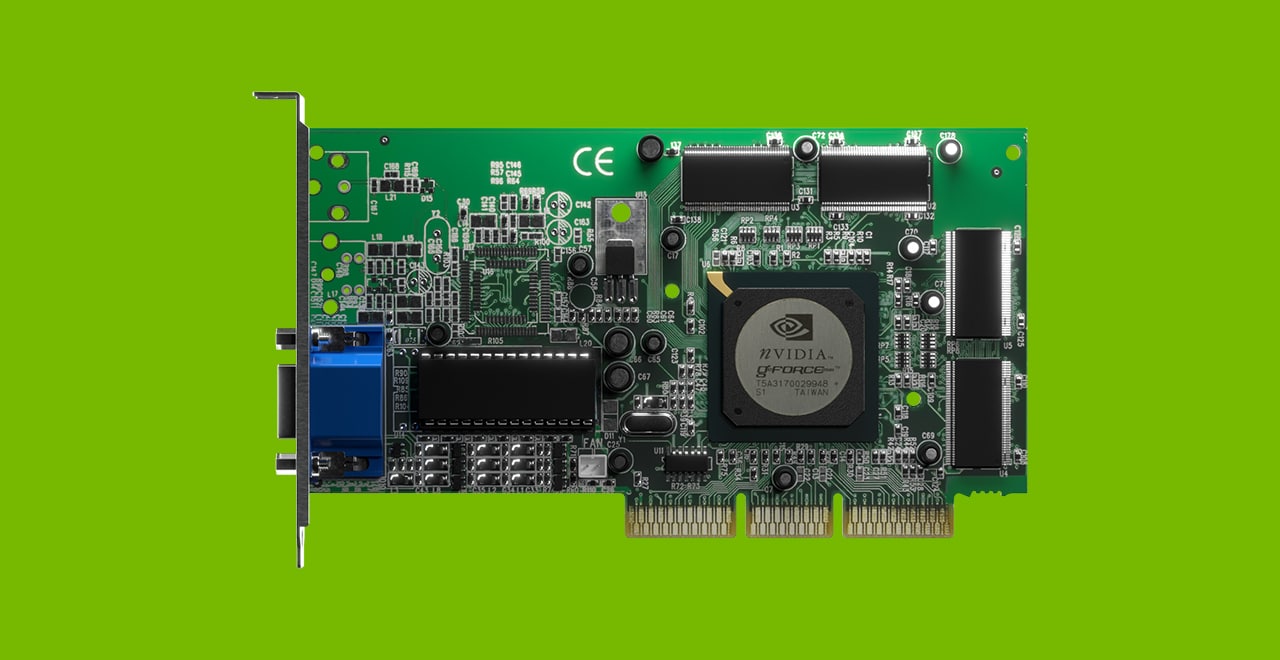In the late 1990s, the world was abuzz with the emergence of new technologies and cultural phenomena. During this time, people flocked to Blockbuster to rent VHS tapes of iconic movies like The Matrix. Concerns about the Y2K bug led some to stockpile essentials like cash and canned food, fearing a potential computer meltdown as the new millennium approached. Amid this backdrop, music enthusiasts were busy downloading the latest hits from artists like Britney Spears and Eminem using Napster. However, during this vibrant period, an even more transformative development was quietly taking place in the tech industry.
NVIDIA, a company known for its innovation in computing, released the GeForce 256 graphics card 25 years ago. Although initially recognized only by dedicated PC gamers and technology enthusiasts, this release was a milestone that would eventually shape the landscape of modern computing, particularly in the realm of artificial intelligence (AI).
The GeForce 256 was not merely another graphics card; it was introduced as the world’s first graphics processing unit (GPU). This designation marked the beginning of a new era, paving the way for significant advancements in both gaming and computing. One of its key features was hardware transform and lighting (T&L), which alleviated the workload on the central processing unit (CPU). As noted by Tom’s Hardware, this development allowed the GPU to handle more complex tasks, enabling game developers to incorporate more polygons into their designs, resulting in significantly enhanced visual detail.
### Where Gaming Changed Forever
For gamers, the experience of running Quake III Arena on the GeForce 256 was nothing short of revolutionary. As described by AnandTech, the graphics rendered by this GPU were so impressive that it was as if players were encountering the game for the first time. The GeForce 256 also complemented groundbreaking titles such as Unreal Tournament, one of the pioneering games featuring realistic reflections, which sold over a million copies in its first year alone.
Over the following 25 years, the collaboration between game developers and NVIDIA continued to push the boundaries of what was possible in gaming. This partnership led to innovations such as more realistic textures, dynamic lighting, and smoother frame rates, which not only provided immersive experiences for players but also transformed the gaming landscape. NVIDIA’s GPUs evolved into a platform that combined new hardware and software to create powerful, groundbreaking innovations.
As the years progressed, NVIDIA’s GPUs delivered increasingly higher frame rates and improved visual fidelity, resulting in smoother and more responsive gameplay. This leap in performance was embraced by streaming platforms like Twitch, YouTube Gaming, and Facebook, allowing gamers to broadcast their content with exceptional clarity and speed. The advancements not only enhanced the gaming experience but also turned players into entertainers, fueling the global growth of esports.
Major esports events, such as The International for Dota 2, the League of Legends World Championship, and the Fortnite World Cup, attracted millions of viewers worldwide. These events helped solidify esports as a global phenomenon, creating new opportunities for competitive gaming and redefining what it means to be a professional gamer.
### From Gaming to AI: The GPU’s Next Frontier
As gaming worlds became more complex, the computational demands grew accordingly. The parallel processing capability that revolutionized gaming graphics caught the attention of researchers, who recognized the potential of GPUs in unlocking massive computational power for AI, leading to breakthroughs far beyond gaming.
Deep learning, a subset of AI that involves vast networks of digital neurons and trillions of connections, requires enormous computational resources. Traditional CPUs, which are designed for sequential processing, were not efficient at handling these tasks. However, GPUs, with their ability to perform many calculations simultaneously, were ideally suited for deep learning applications.
By 2011, AI researchers had discovered the potential of NVIDIA GPUs in meeting the hefty processing requirements of deep learning. Researchers from institutions like Google, Stanford, and New York University began leveraging NVIDIA GPUs to accelerate the development of AI, achieving performance levels that previously required supercomputers.
In 2012, a pivotal moment occurred when Alex Krizhevsky from the University of Toronto used NVIDIA GPUs to win the ImageNet image recognition competition. His neural network, known as AlexNet, was trained on a million images and outperformed software crafted by expert vision engineers, marking a significant shift in technology. What once seemed like a concept from science fiction—computers learning and adapting from vast data sets—became a reality, propelled by the raw power of GPUs.
By 2015, AI had achieved superhuman levels of perception, with tech giants like Google, Microsoft, and Baidu surpassing human capabilities in tasks such as image recognition and speech understanding. These achievements were made possible by deep neural networks running on GPUs.
In 2016, NVIDIA CEO Jensen Huang donated the first NVIDIA DGX-1 AI supercomputer, equipped with eight cutting-edge GPUs, to OpenAI. This system was instrumental in training ChatGPT, a conversational AI model launched in November 2022.
In 2018, NVIDIA introduced the GeForce RTX 20 Series, featuring RT Cores and Tensor Cores designed specifically for real-time ray tracing and AI workloads. This innovation accelerated the adoption of ray-traced graphics in games, bringing cinematic realism to gaming visuals. Features like NVIDIA DLSS, which used deep learning to enhance gaming performance, further demonstrated the transformative impact of AI.
ChatGPT, launched in 2022, rapidly gained popularity, reaching over 100 million users within months. This success underscored how NVIDIA GPUs continue to drive the remarkable power of generative AI.
Today, GPUs have transcended their origins in gaming and become cultural icons, celebrated in various forms of media and art. They appear in Reddit memes, Twitch streams, and T-shirts at events like Comic-Con, and have even been immortalized in custom PC builds and digital fan art.
### Shaping the Future
The revolution that began with the release of the GeForce 256 continues to unfold today across gaming, entertainment, and personal computing. AI powered by NVIDIA GPUs is now an integral part of everyday life, and industries valued at trillions of dollars are integrating next-generation AI into their core business strategies.
GPUs are not only enhancing gaming experiences but are also shaping the future of AI. Innovations like NVIDIA DLSS, which uses AI to improve gaming performance and deliver sharper images, and NVIDIA ACE, which brings lifelike interactions to in-game characters, are once again redefining the gaming world.
The GeForce 256 laid the foundation for a future where gaming, computing, and AI are not just evolving but are collectively transforming the world. As these technologies continue to advance, they promise to deliver even more groundbreaking innovations that will shape our digital experiences for years to come.
For more Information, Refer to this article.


































